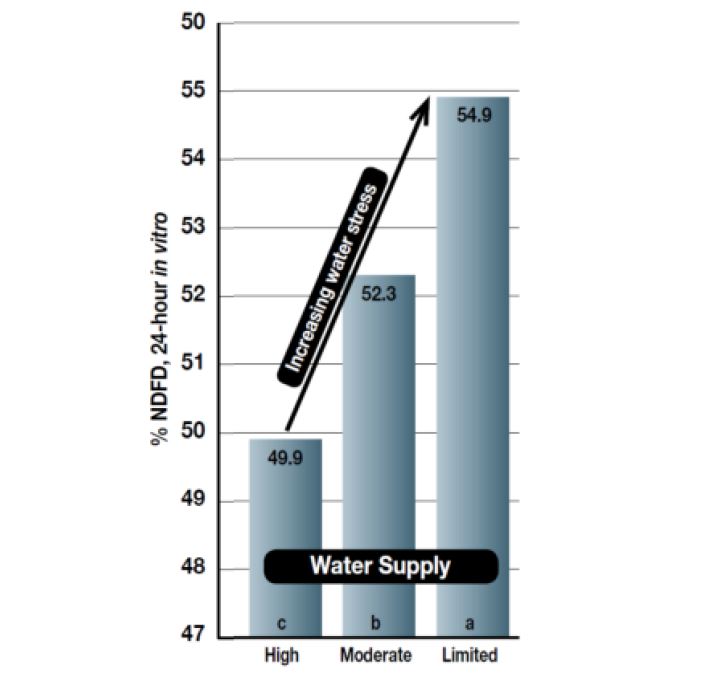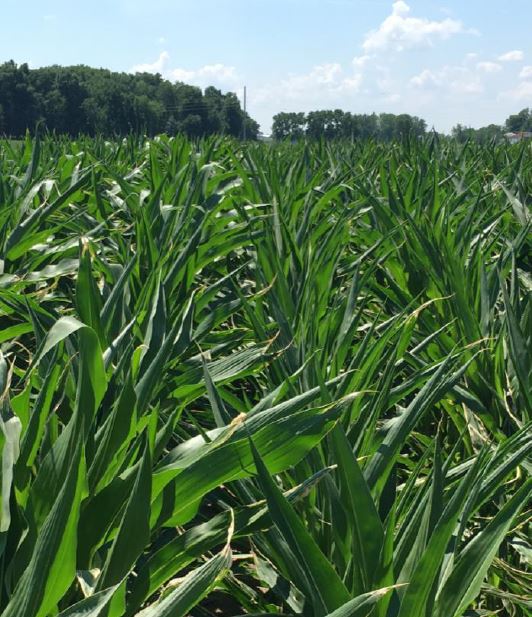Drought can result in plants ranging from barren plants with no ears or starch content to varying levels of starch (grain) depending upon stress at pollination and subsequent kernel abortion. Energy will be partitioned more into sugar and fiber in the stalk and leaves rather than to grain. Studies conducted by Michigan State University indicate that severely stressed corn (short plants with essentially no ears), still had a feeding value of approximately 70% of normal corn silage due to the highly digestible fiber and sugar content. Drought stress, particularly during the vegetative growth phase, tends to enhance fiber digestibility (Figure 2). Due to the potential variability, it is important to analyze droughty corn silage for dry matter, NDF (neutral detergent fiber), NDF digestibility, sugar, starch and nitrates (%NO3 or ppm NO3-N) and consider segregating storage based on fields that may have relatively higher feed value.
Figure 2: Influence of water availabiltiy on fiber digestibility (Pioneer Research, lasalle, CO. 2001)

Figure 3: Nitrate levels in corn silage for cattle
NITRATE ION %
|
NITRATE NITROGEN PPM
|
RECOMMENDATIONS
|
0.0-0.44
|
<1000
|
Safe to feed under all conditions
|
0.44-0.66
|
1000-1500
|
Safe to feed to non-pregnant animals. Limit use for pregnant animals to 50% of total ration on DM basis.
|
0.66-0.88
|
1500-2000
|
Safe to feed if limited to 50% of total DM ration.
|
0.88-1.54
|
2000-3500
|
Feeds should be limited to 35-40% of total DM in the ration. Feeds over 2000 PPM nitrate nitrogen should not be fed to pregnant animals.
|
1.54-1.76
|
3500-4000
|
Feeds should be limited to 25% of total DM in the ration. Do not feed to pregnant animals.
|
Over 1.76
|
>4000
|
Feed containing these levels are potentially toxic. DO NOT FEED.
|
Adapted from: Cornell University. To covert % nitrate ion (NO3) to ppm Nitrate-Nitrogen divide %NO3 by 4.4 to obtain %NO3-N and multiply %NO3-N x 10,000 to obtain ppm NO3-N.









